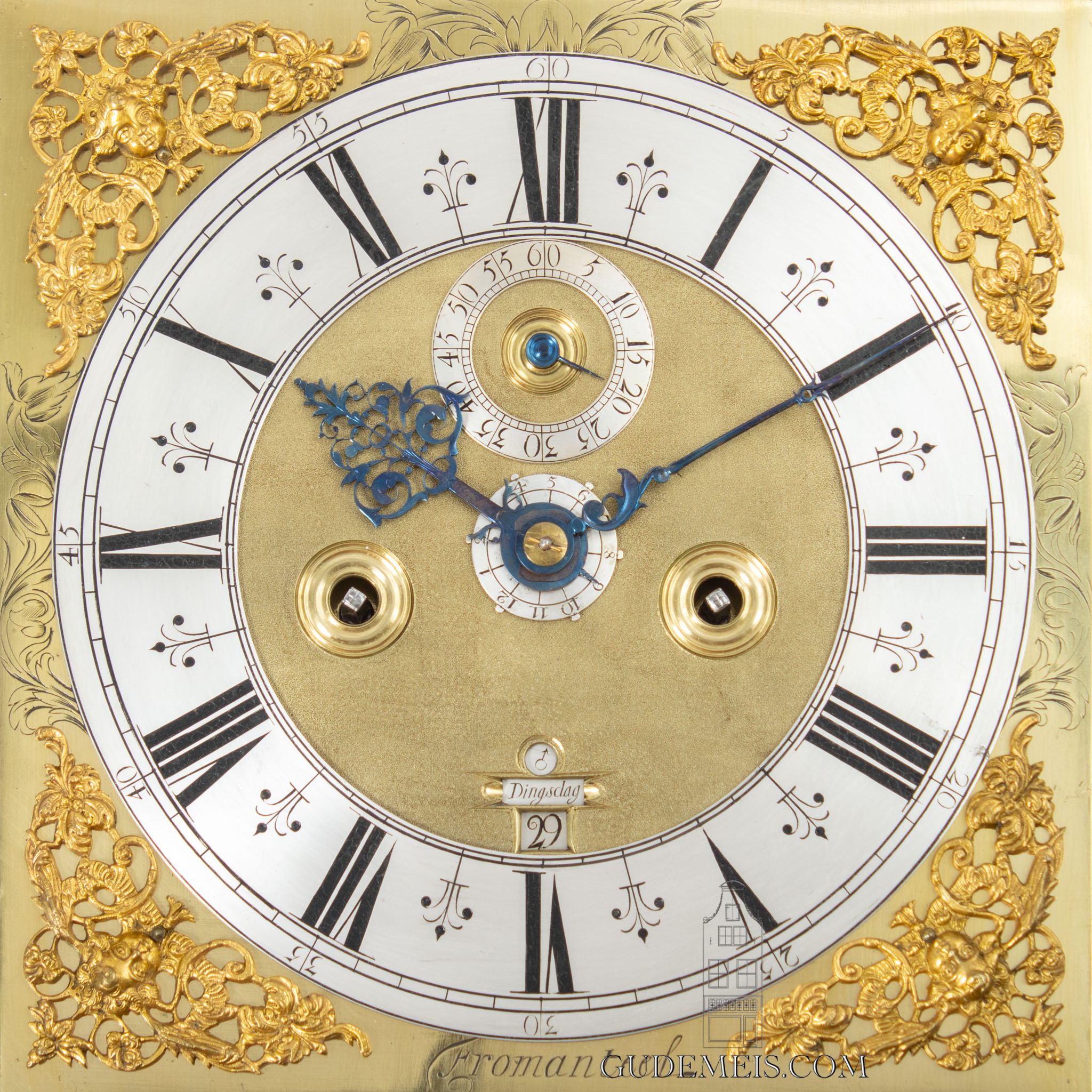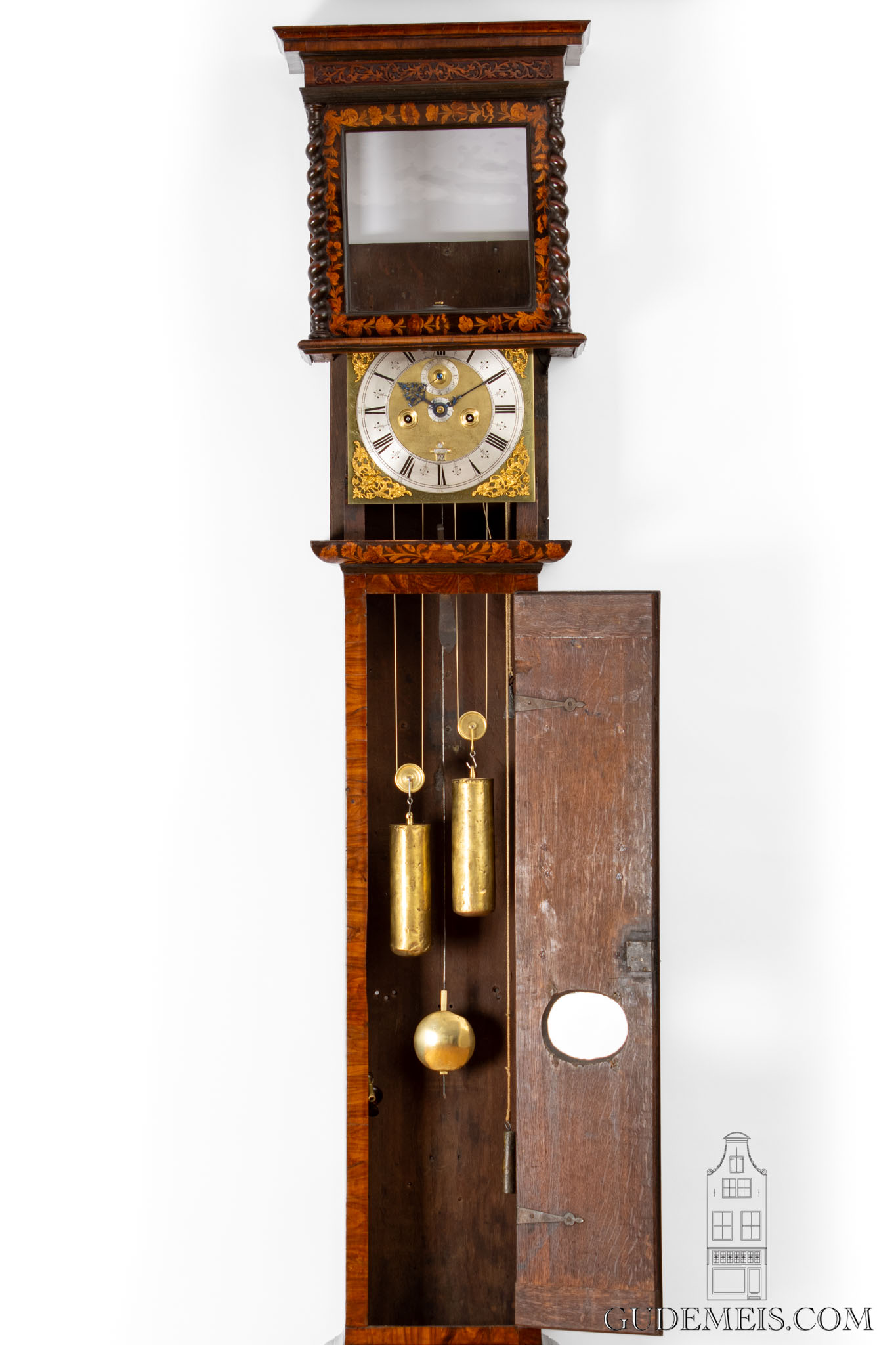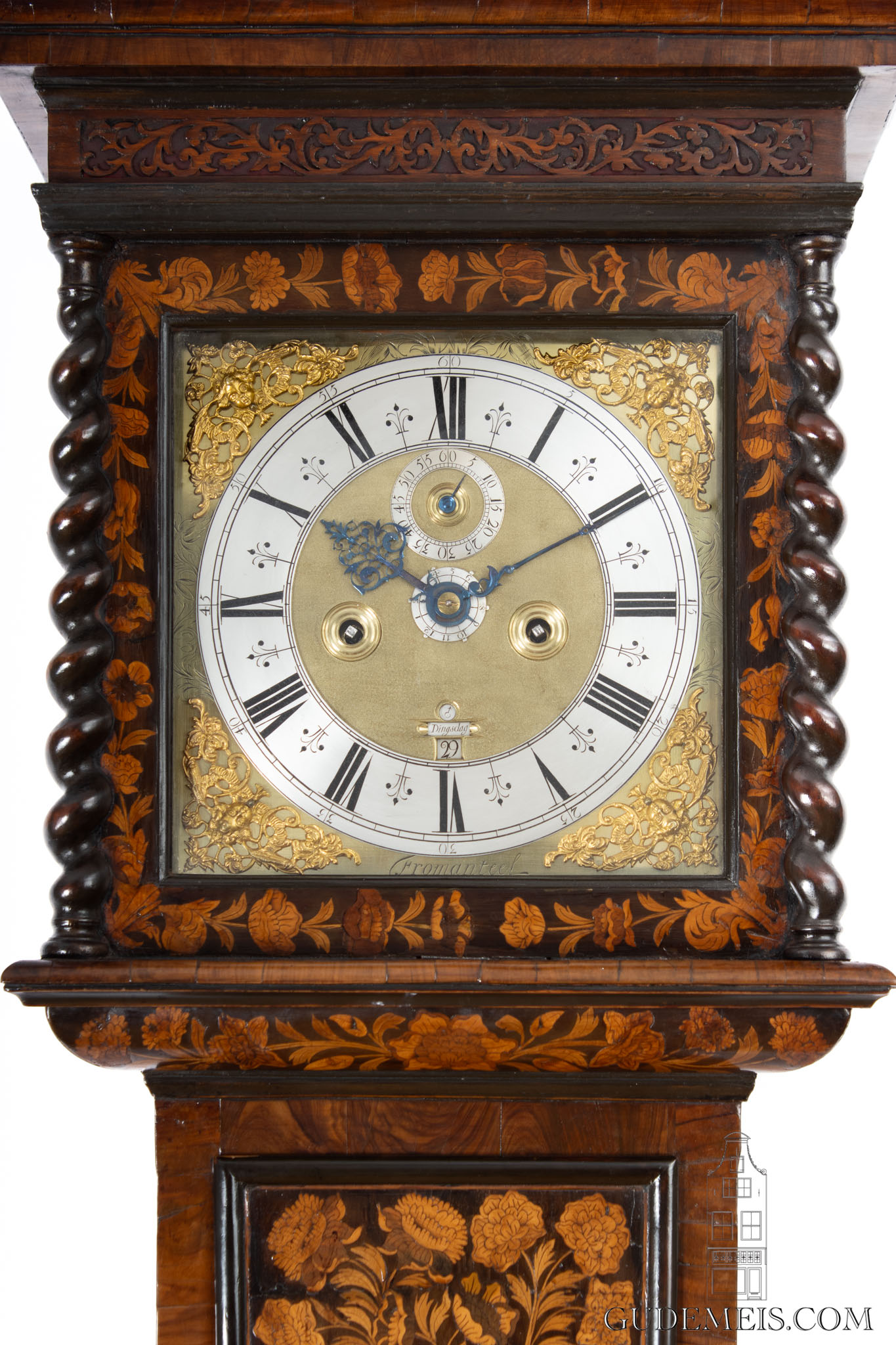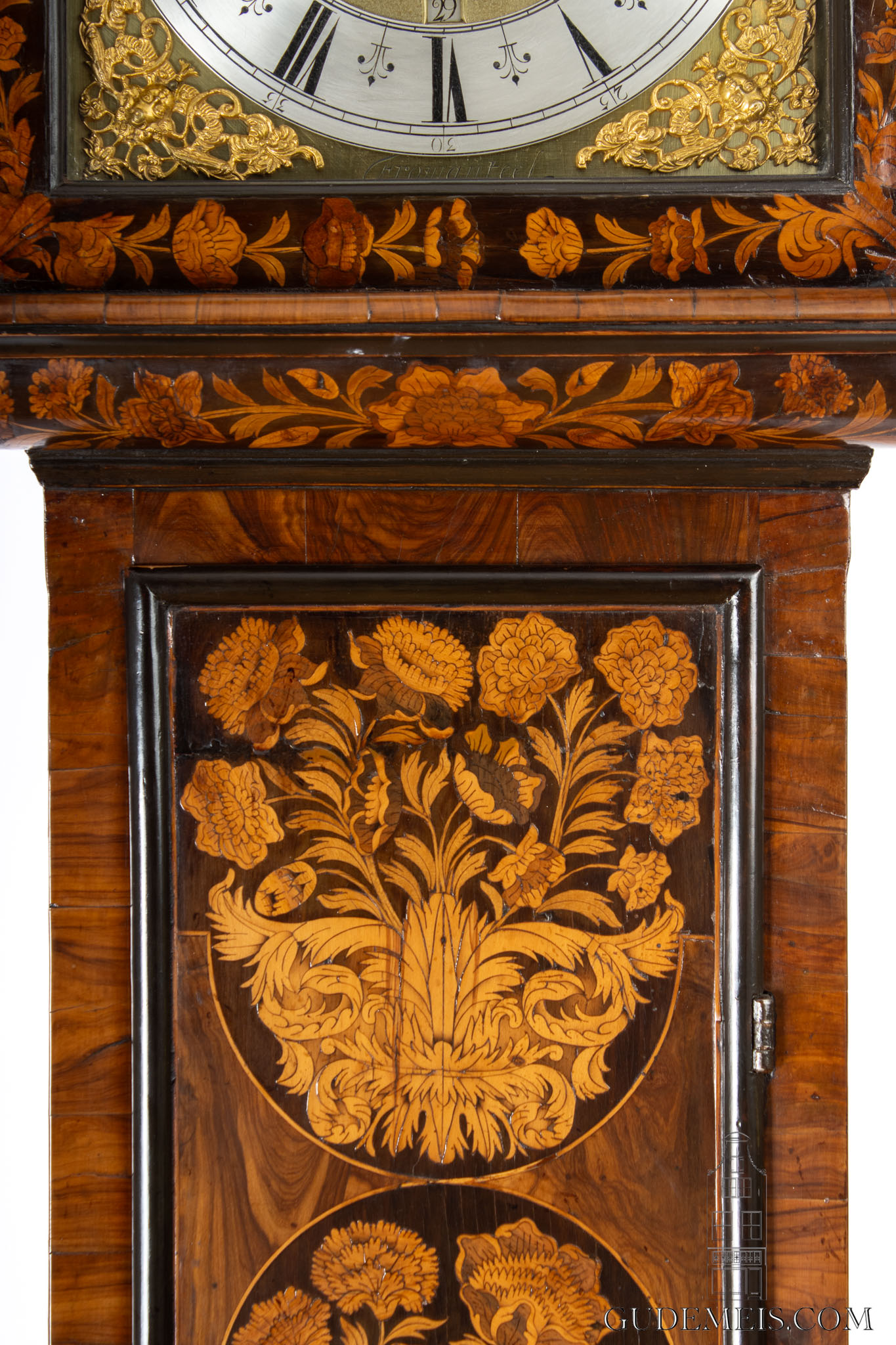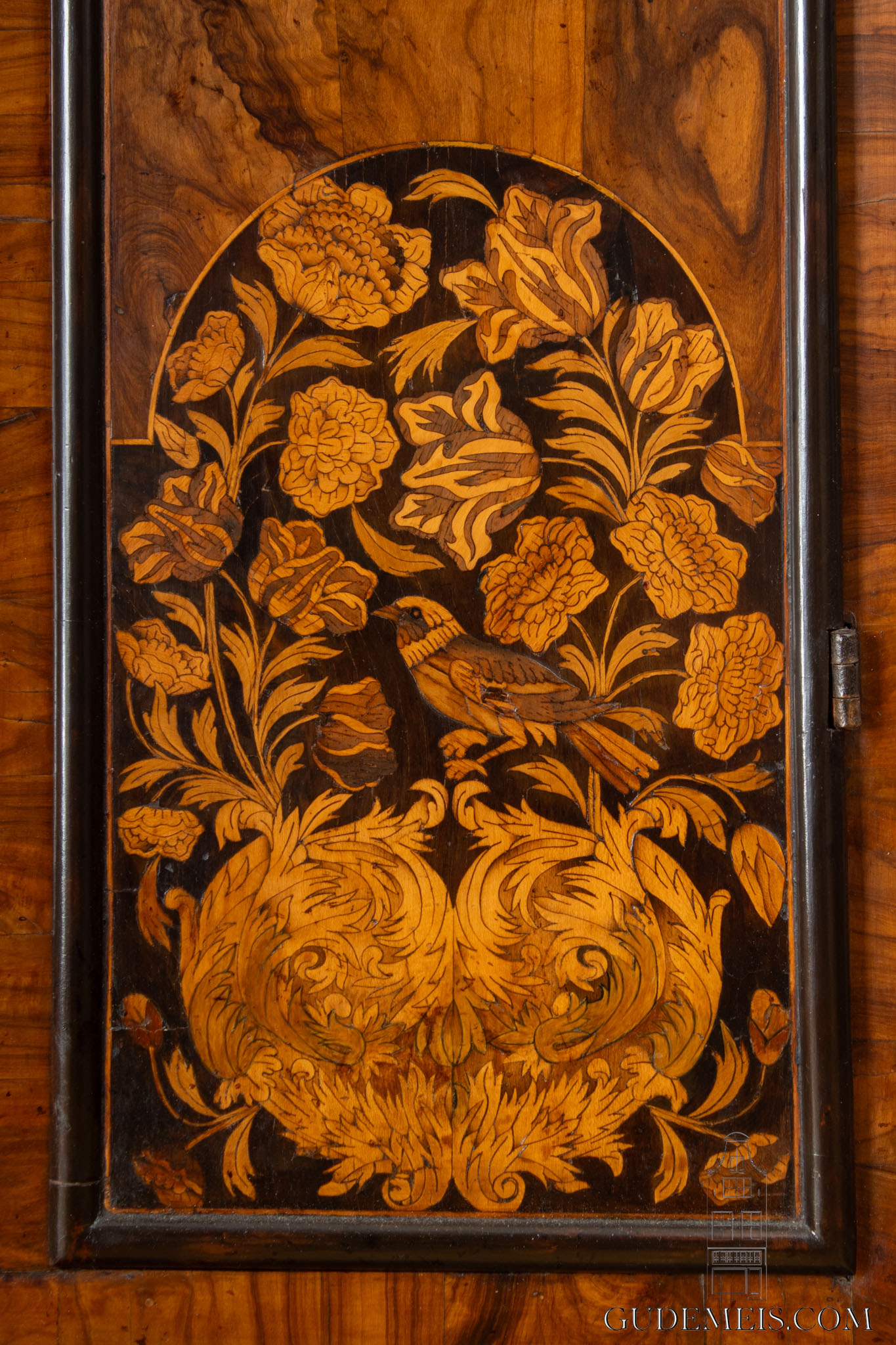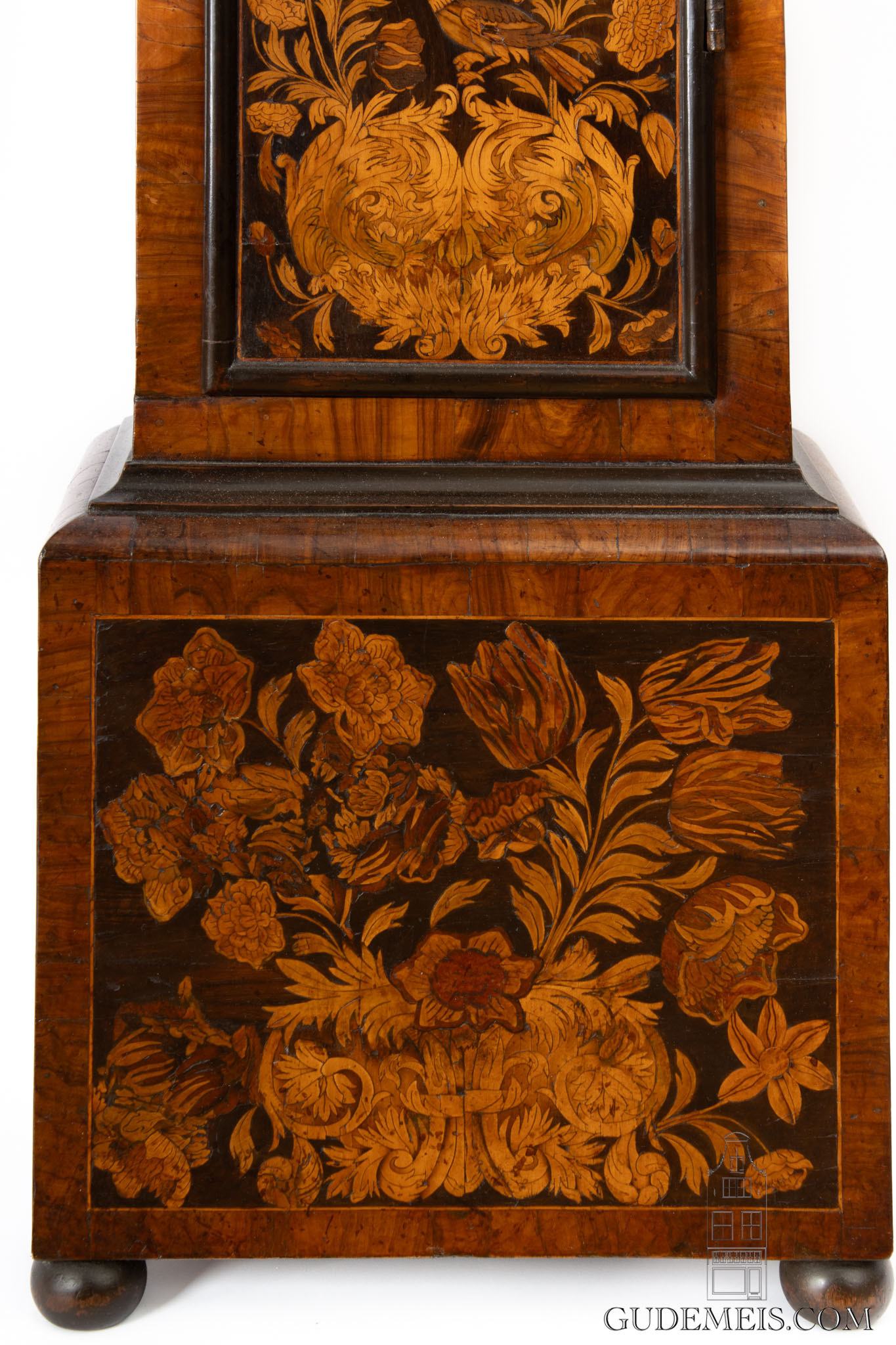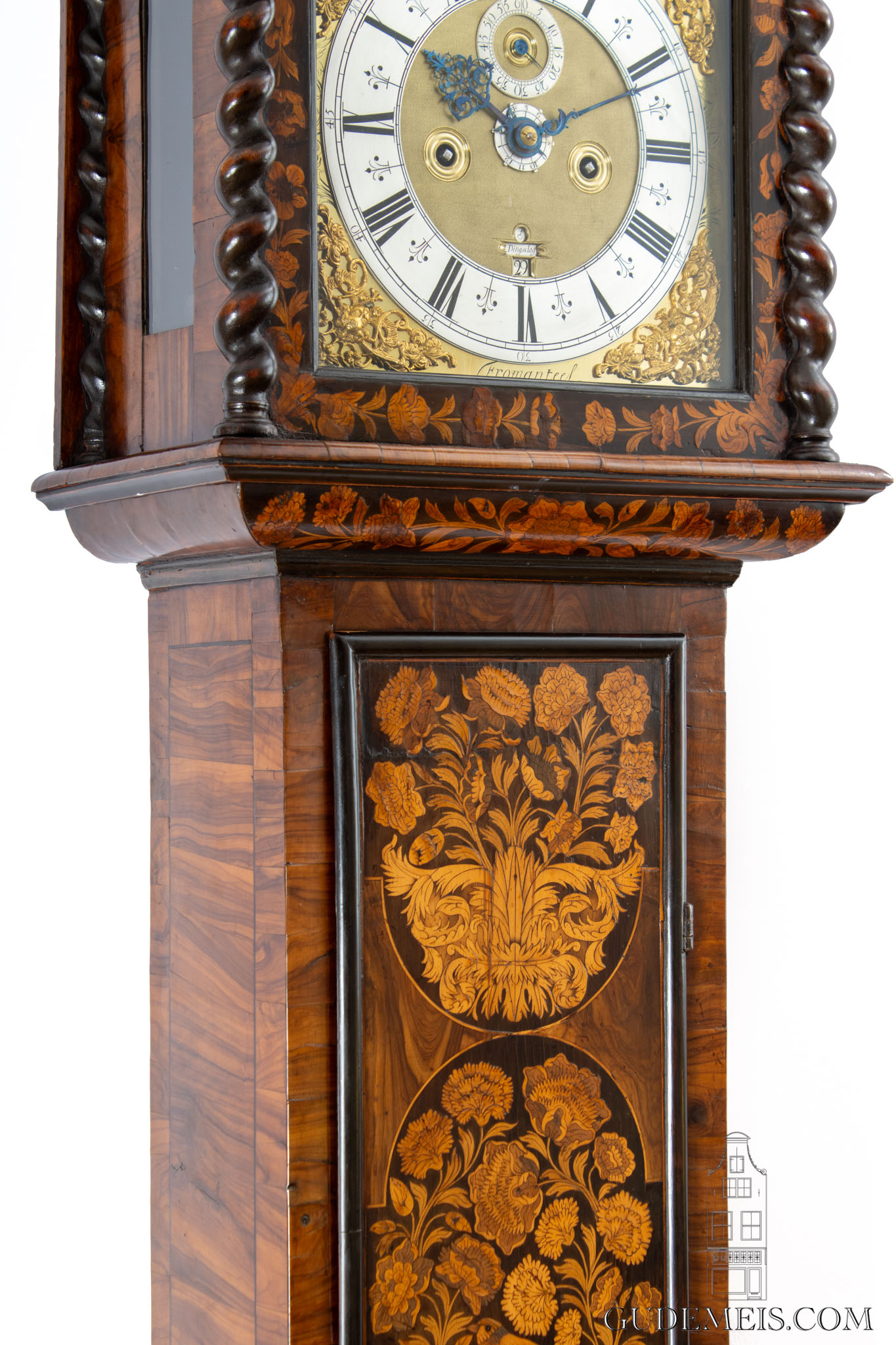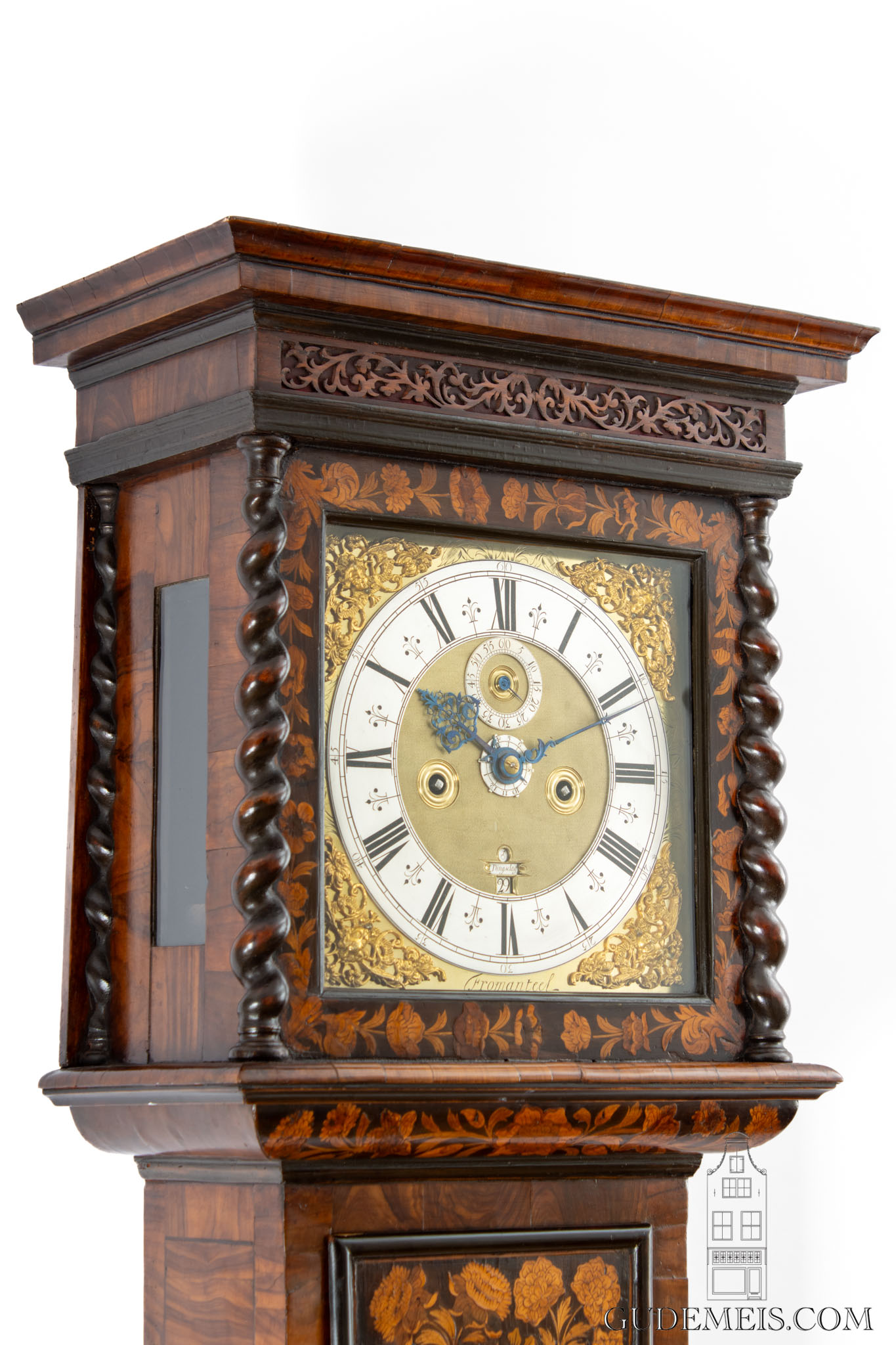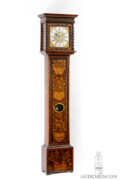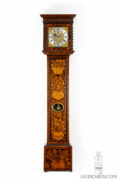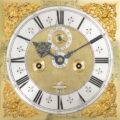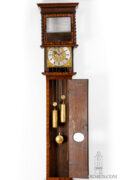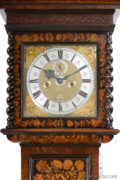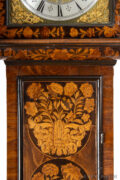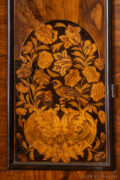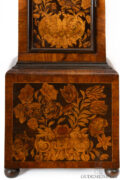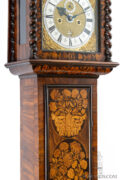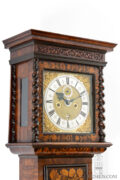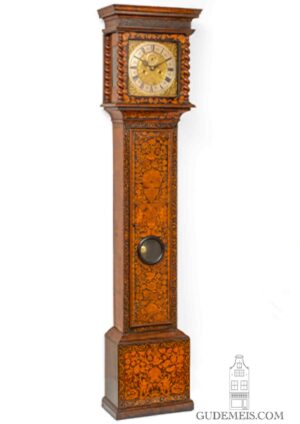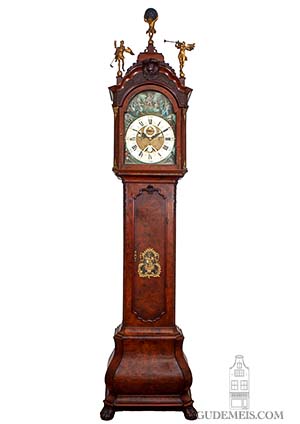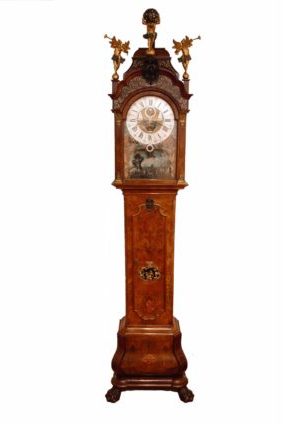An early Anglo Dutch marquetry inlaid longcase clock signed Fromanteel, circa 1685.
Description
Fromanteel
The invention of the pendulum movement by Christiaan Huygens in 1656 led to an enormous improvement in time measurement. It is therefore no surprise that this innovation spread rapidly across Europe. It was the prominent clockmaker Ahasuerus Fromanteel who introduced the pendulum movement to England. He was of Flemish descent and probably also spoke Dutch. His son John, who had been apprenticed to Salomon Coster, Huygens’ clockmaker, had brought the invention to England. Remarkably, Ahasuerus adapts the invention almost immediately and applies it in his own way. Around 1659 he introduced a longcase clock with a number of characteristics that would be followed for some time to come. The dial is made of brass and has an applied silvered chapter ring and cast spandrels with cherubs. The case looks somewhat like a classic column with a square base, a narrow trunk and a wider hood. This is not surprising because this development takes place during the Baroque era, a style period in which classical elements are applied. It is hard to explain how remarkable it is that he came up with this iconic design almost without any development. It was so successful that longcase clocks hardly changed until about 1710.
This fine example was made by Ahasuerus Fromanteel II (1641-1703). It is executed with beautiful marquetry veneer which was very popular in Holland and England at this time. It also has a hood that slides upward instead of forward, which is an early feature. Both movement and case have the outstanding quality that is characteristic of work by this famous lineage of clockmakers.
A little before 1675, the first English clockmakers came to Amsterdam and introduced the longcase clock, among other things. Two of Ahasuerus’ sons, Ahasuerus II and the aforementioned John (Johannes) also came to Holland around 1680. During this period, the company had branches in London, Oxford and Amsterdam and the clocks were signed only Fromanteel. It is very likely that this clock with its calendar indications in Dutch was made by these two brothers before 1694. In that year, Ahasuerus II entered into a partnership with his son-in-law Christopher Clarke, after which the clocks were signed Fromanteel & Clarke.
Calendar
The square brass dial has a silvered chapter ring with Roman numerals and Arabic five-minute indication. The dial is fitted by means of a kind of sliders called ‘latches’. Below the XII is the seconds hand. The matted centre has ‘ringed’ winding holes and apertures for the calendar. This consists of indications for the date and the days of the week with day sign. The beautiful pierced hands are made of blued steel and the engraved alarm disc is made of silvered brass. The dial is also decorated with beautifully cast cherub spandrels. Between these is floral engraving with the signature Fromanteel in the middle below.
Alarm
The five beautifully turned and ringed pillars that connect the plates of the movement are also secured with ‘latches’. The movement is driven by two weights and has a duration of more than a week. It is regulated by anchor escapement in combination with a seconds pendulum. The clock has a half-hour striking on a bell by means of a countwheel. The alarm also strikes on the bell.
Marquetry
The slide-up hood has a decorative moulding sawn above pierced fretwork. The square glass panel is surrounded by flower marquettry and has twisted columns at the corners. There are rectangular glass panels at the sides of the hood that provide a view of the movement. The slender trunk has a long door with oval flower marquetterie panels. The square base is also adorned with flower marquetry and is raised on small bun round feet.


